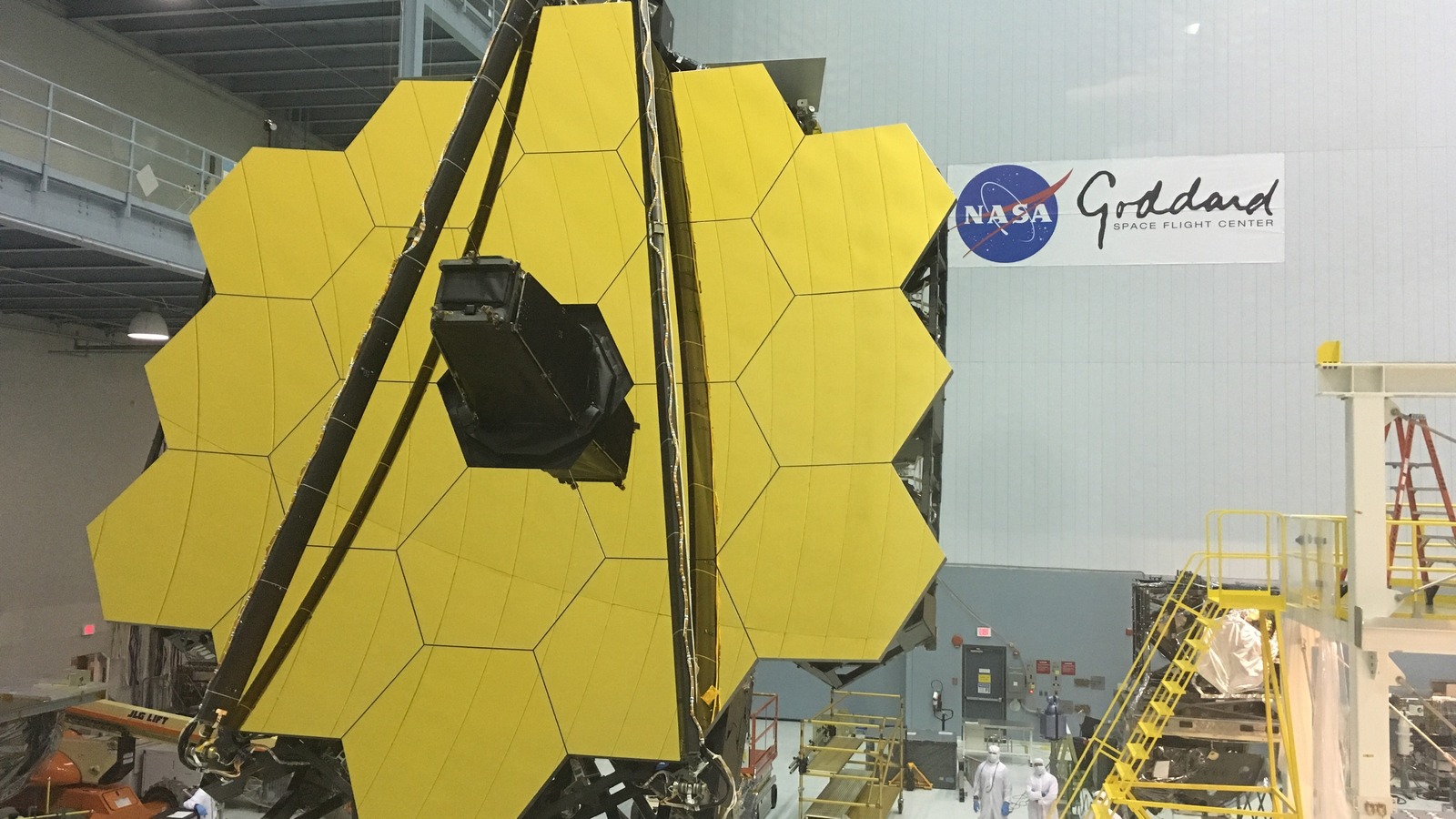
Testing can be a nerve-wracking process, and at one point the testing team was rather concerned. In 2016, a part of Webb was being put through vibration testing, in which the hardware is rapidly shaken to ensure it can withstand the jostling of launch, at NASA’s Goddard Space Flight Center. All appeared to be going to plan until the testing team heard a loud crack. “People said ‘Oh my god, did we just break it?'” said Geithner (via NASA). “I mean, it sounded bad. Then the test automatically shut down. That was probably the scariest point.”
Fortunately, the hardware itself was not permanently damaged, and the engineers added mass dampers to support the secondary mirror to make sure it could survive launch without fracturing. Another challenge arose during the testing process when Webb’s telescope was at NASA’s Johnson Space Center in Houston, Texas, in 2017. Then hurricane Harvey rolled in — a category four hurricane that made landfall in Texas in August 2017 (via National Weather Service). Members of the team stayed at Johnson to watch over Webb in shifts and continued testing to make sure it worked as planned.
All of this hard work and careful planning over a years-long testing process proved worth it, as Webb was able to launch, deploy, and reach its orbit with no problems — an achievement that shouldn’t be underestimated. The team calculated there were 295 single-point failures that could have damaged the mission. “All of those failures could have happened, and they didn’t, thanks to all the process controls and testing implemented over the years,” Geithner said. “So we said, ‘This thing is going to work.'”
Stay connected with us on social media platform for instant update click here to join our Twitter, & Facebook
We are now on Telegram. Click here to join our channel (@TechiUpdate) and stay updated with the latest Technology headlines.
For all the latest Automobiles News Click Here
